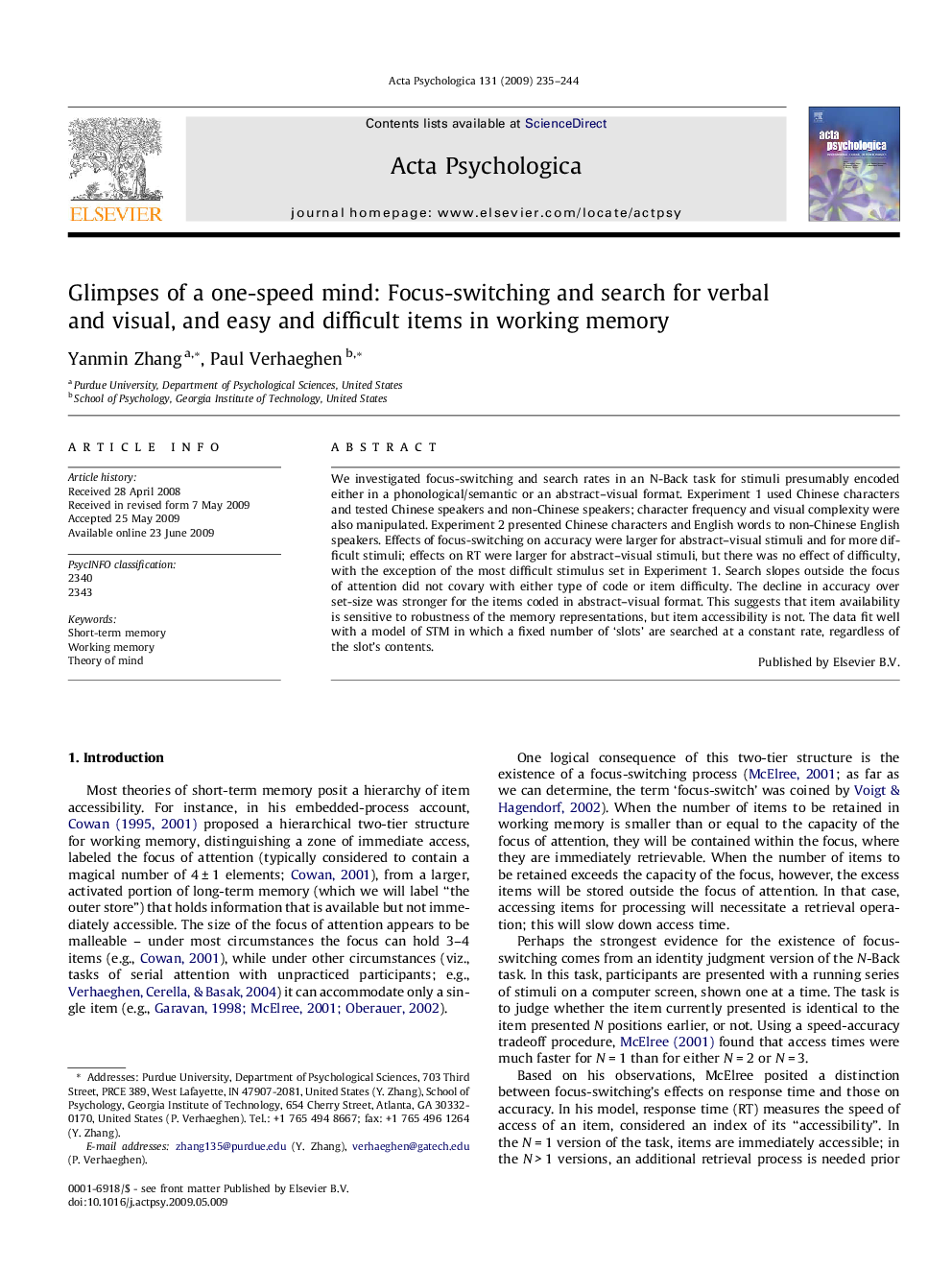| Article ID | Journal | Published Year | Pages | File Type |
|---|---|---|---|---|
| 920451 | Acta Psychologica | 2009 | 10 Pages |
We investigated focus-switching and search rates in an N-Back task for stimuli presumably encoded either in a phonological/semantic or an abstract–visual format. Experiment 1 used Chinese characters and tested Chinese speakers and non-Chinese speakers; character frequency and visual complexity were also manipulated. Experiment 2 presented Chinese characters and English words to non-Chinese English speakers. Effects of focus-switching on accuracy were larger for abstract–visual stimuli and for more difficult stimuli; effects on RT were larger for abstract–visual stimuli, but there was no effect of difficulty, with the exception of the most difficult stimulus set in Experiment 1. Search slopes outside the focus of attention did not covary with either type of code or item difficulty. The decline in accuracy over set-size was stronger for the items coded in abstract–visual format. This suggests that item availability is sensitive to robustness of the memory representations, but item accessibility is not. The data fit well with a model of STM in which a fixed number of ‘slots’ are searched at a constant rate, regardless of the slot’s contents.
